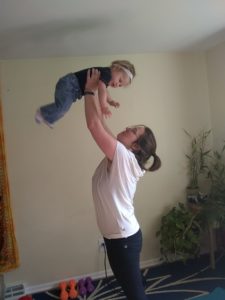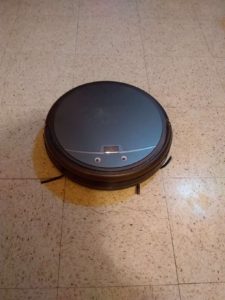Updated February, 2021
If you are anything like me, you had never even heard of Diastasis Recti prior to your pregnancy. And if you are like so many women I know, you may have already had your baby and never heard of it still. My wonderful midwife told me a little about what it is, how to lessen the odds of it occurring, and then how to take care of myself after my little one was born. This blog is specifically about managing and avoiding abdominal separation during your pregnancy.
What is it?
Abdominal separation, also known as Diastasis Recti, occurs in 2/3rds of pregnancies. It is the separation of the abdominal muscles. You know those pretty ones that are shown off so well for those hard working individuals who have a 6 pack? Well during pregnancy, your baby needs to go pretty much right where those muscles exist, so your body will separate the muscle, sometimes even tearing them, in order to make room for your tiny human.
While common, you want that separation to stay small and for it to be more of a stretch than a tear. Provided you manage it appropriately during pregnancy, you can repair it after birth. Diastasis Recti is generally not painful and is part of your body’s amazing ability to grow and make room for a human.
After birth, when so many mamas suffer from that “Mummy Tummy”, it is often caused by Diastasis Recti.
How to Avoid It
Some level of abdominal separation is often inevitable. However, avoiding certain movements and taking care of your body can help prevent severe and lasting separation.
The Log Roll
First off, while pregnant, ensure you are lying down and getting up using the “log roll” posture. Your body is heavy now, so lifting it off the bed will cause you to strain. To protect your mid-line, roll your body, with your torso and head aligned and in one piece, to one side. Then use your arms to push up to a sitting position. It’s that easy! My midwife had me start practicing this before I was heavy with Monster so that I had the habit in place already and it definitely helped.
Avoid Strain
You want to avoid straining, including heavy lifting and weight lifting (this includes any children you may already have!). Also avoid crunches, pushups, and front planks. Any big twists (think triangle pose in yoga) or any yoga pose that really stretches the abs, such as cow pose, upward dog, pretty much all back bends, and belly breathing are out. Any exercise that requires lying backward over a large exercise ball are also a no no.
Think of your mid-line and core as an area to be protected during pregnancy, not exerted. You already have a baby pushing around that area, you don’t need to add your own exertion to that process. Now is really not the time to start a new weight lifting practice. Have to pick up your toddler anyway? Make sure to engage and tighten your core muscles first.
Maintain Existing Strength
While you want to avoid a lot of exercises, you’re also naturally going to want to strengthen what you can. I have heard that squats with proper form are really good for that. Also, be sure to try and stay active during your pregnancy as much as possible.
Even doing every single thing right, you may still end up with Diastasis Recti like I did (well, ok, I probably didn’t do everything right). After Monster was born, a quick check told me I had about a 1.5 finger gap in my tummy. See my Abdominal Separation After Pregnancy blog for what to do if you’ve already had your little one and need help.
MEDICAL DISCLAIMER
All of the information on this site assumes that the mother-to-be is in good physical and mental health, and that her pregnancy is without risk factors or complications. Web site content is for informational purposes only and is not intended to offer medical advice, or replace the recommendations of your doctor, midwife, or physical therapist. Always consult your doctor before beginning any exercise program.














